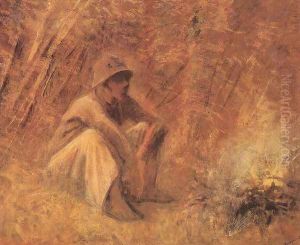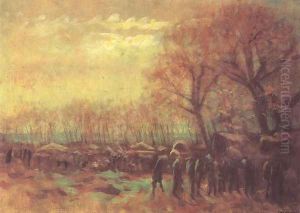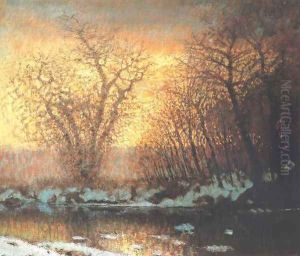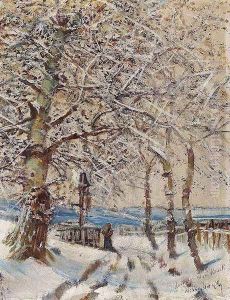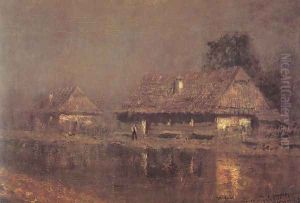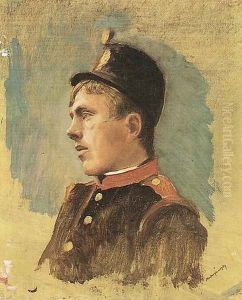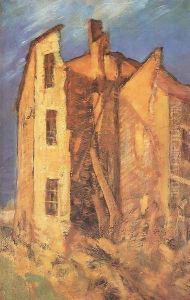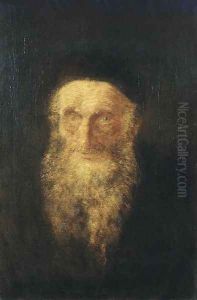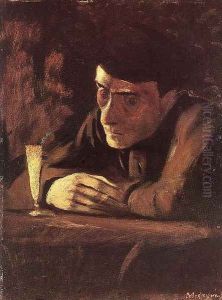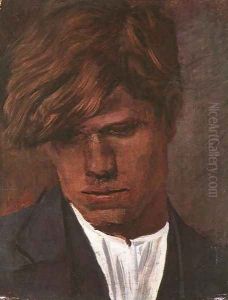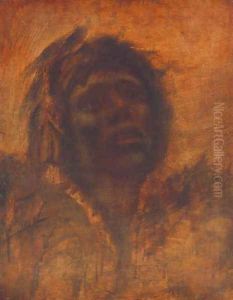Laszlo Mednyanszky Paintings
László Mednyánszky, or Ladislaus Josephus Balthasar Eustachius Mednyánszky, was a significant Hungarian painter known for his poetic representation of landscapes, figures, and still lifes that often carried a melancholic tone. Born on April 23, 1852, in Beckov, then part of the Austro-Hungarian Empire and now in Slovakia, Mednyánszky came from an aristocratic family. His upbringing in the Beckov Castle and its picturesque surroundings had a lasting impact on his artistic sensibilities.
From a young age, Mednyánszky showed an inclination towards art, and he began his formal training in Vienna at the Academy of Fine Arts. He later continued his studies in Munich and Paris, where he was exposed to various artistic movements of the time, including Impressionism and Symbolism. However, Mednyánszky developed a distinctive style that combined elements of realism with a lyrical, almost ethereal quality that became characteristic of his work.
During his life, Mednyánszky traveled extensively, which greatly influenced his art. He lived and worked in places like Budapest, Vienna, Paris, and Rome, and also spent time in the Slovakian countryside, where he drew inspiration from the natural landscape and rural life. His paintings often depicted the struggles of the poor, reflecting his empathy and social concern.
Mednyánszky's work was not widely recognized during his lifetime, and he struggled with financial difficulties and personal turmoil. His later years were marked by loneliness and isolation, although he continued to paint until his death. After his passing on April 17, 1919, in Vienna, Mednyánszky's artwork gained greater recognition and appreciation. Today, he is celebrated as one of the most important Slovak painters, and his works are featured in numerous galleries and museums across Hungary, Slovakia, and beyond.
Despite his struggles, Mednyánszky's legacy as an artist endures through his evocative landscapes and poignant figure paintings, which capture the emotional and spiritual essence of his subjects with a profound sensitivity. His distinctive approach to capturing light and mood has earned him a place among the notable European artists of the turn of the century.
